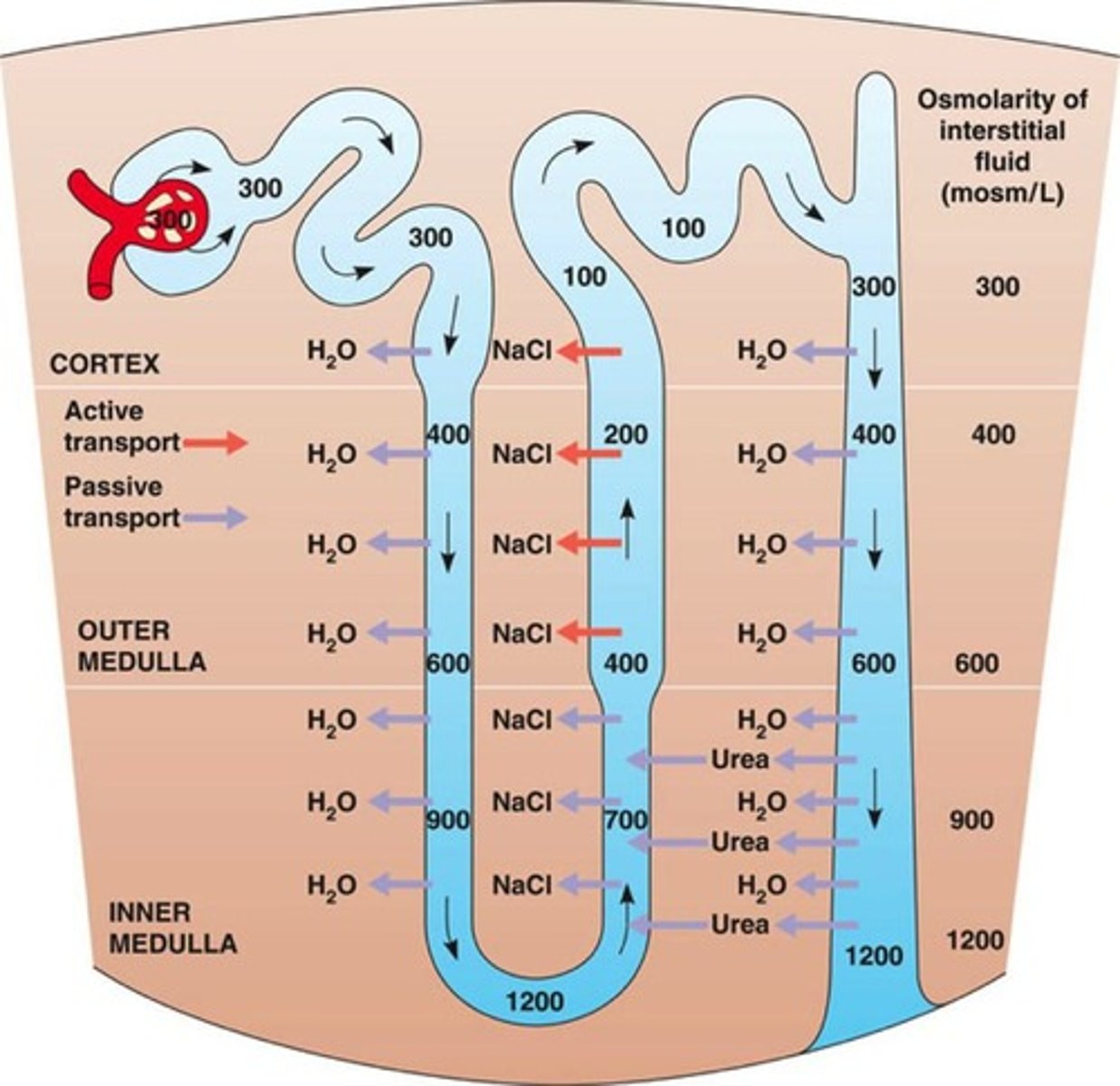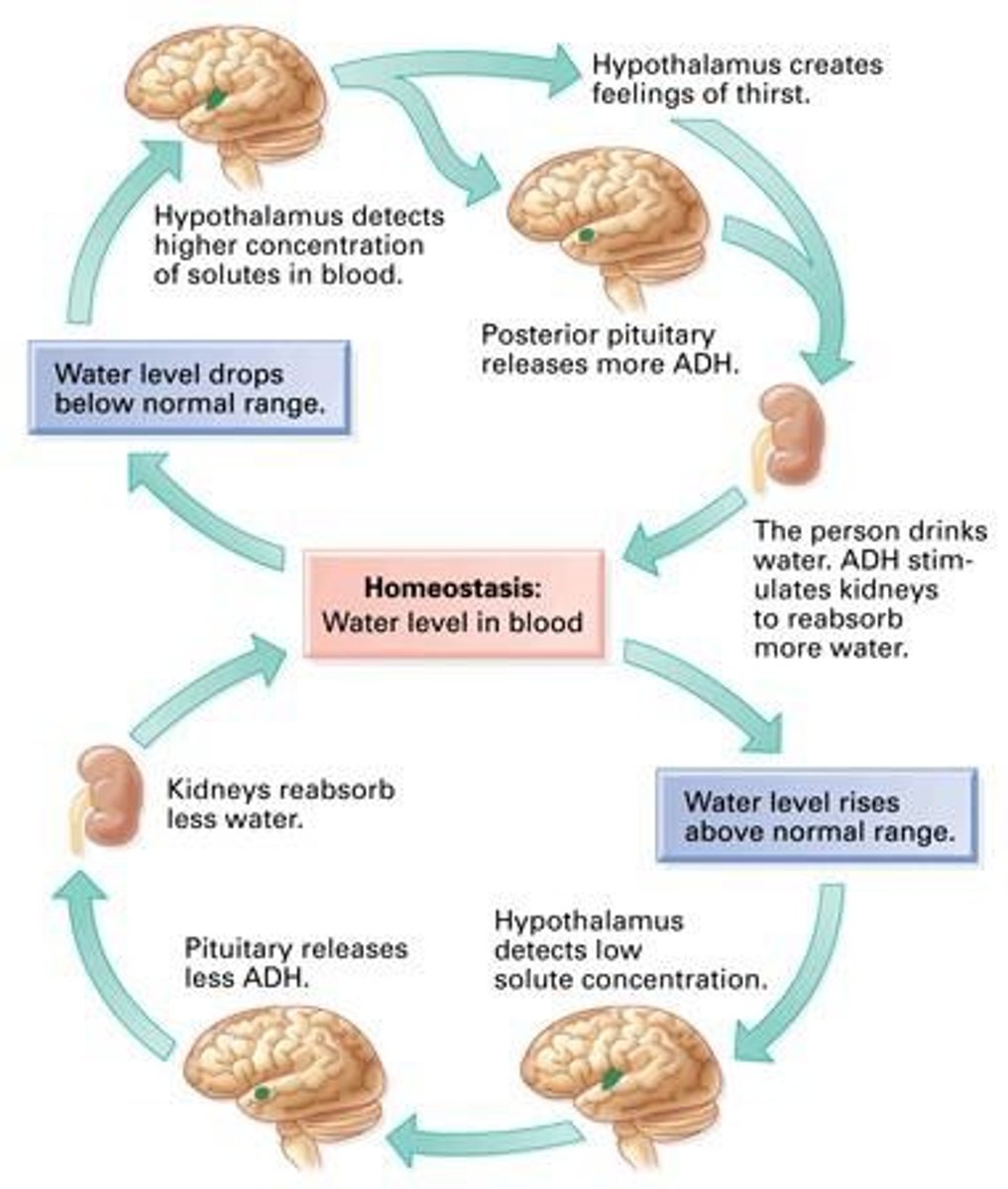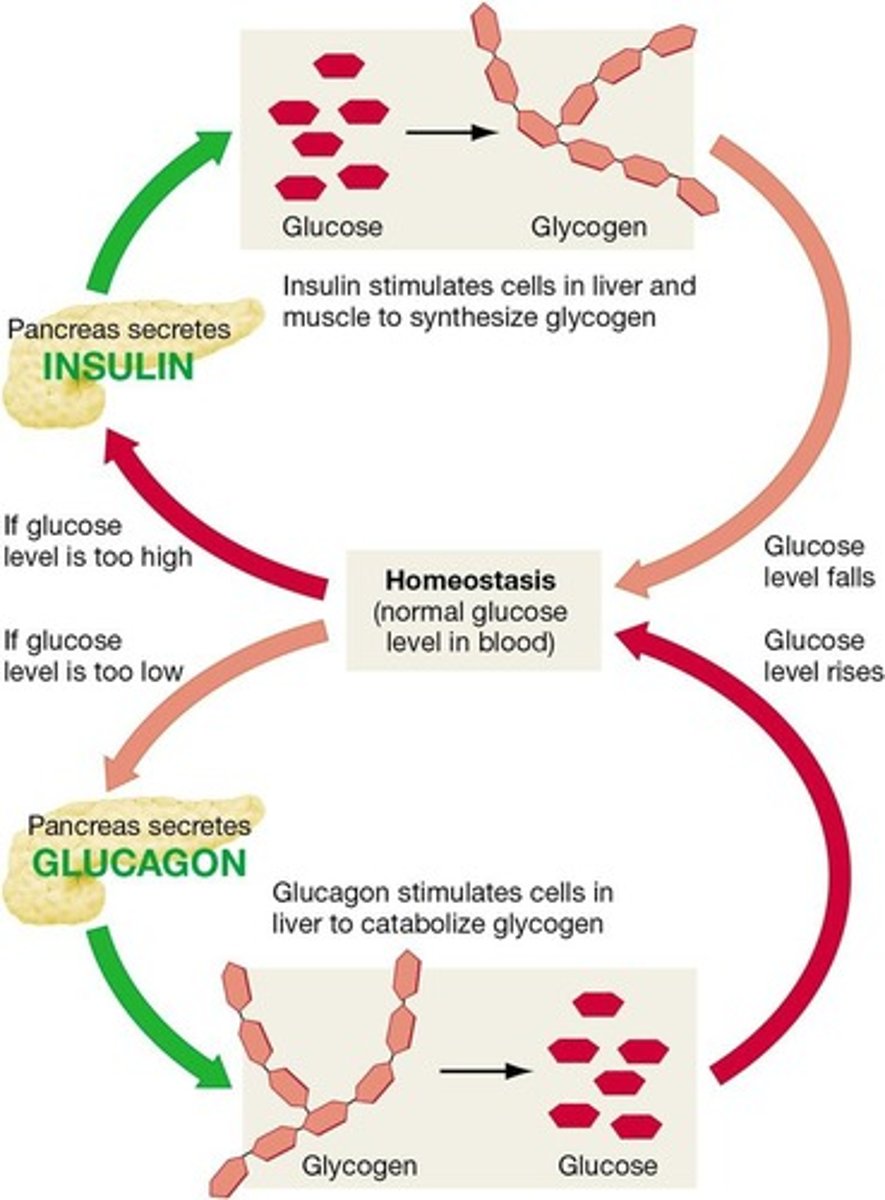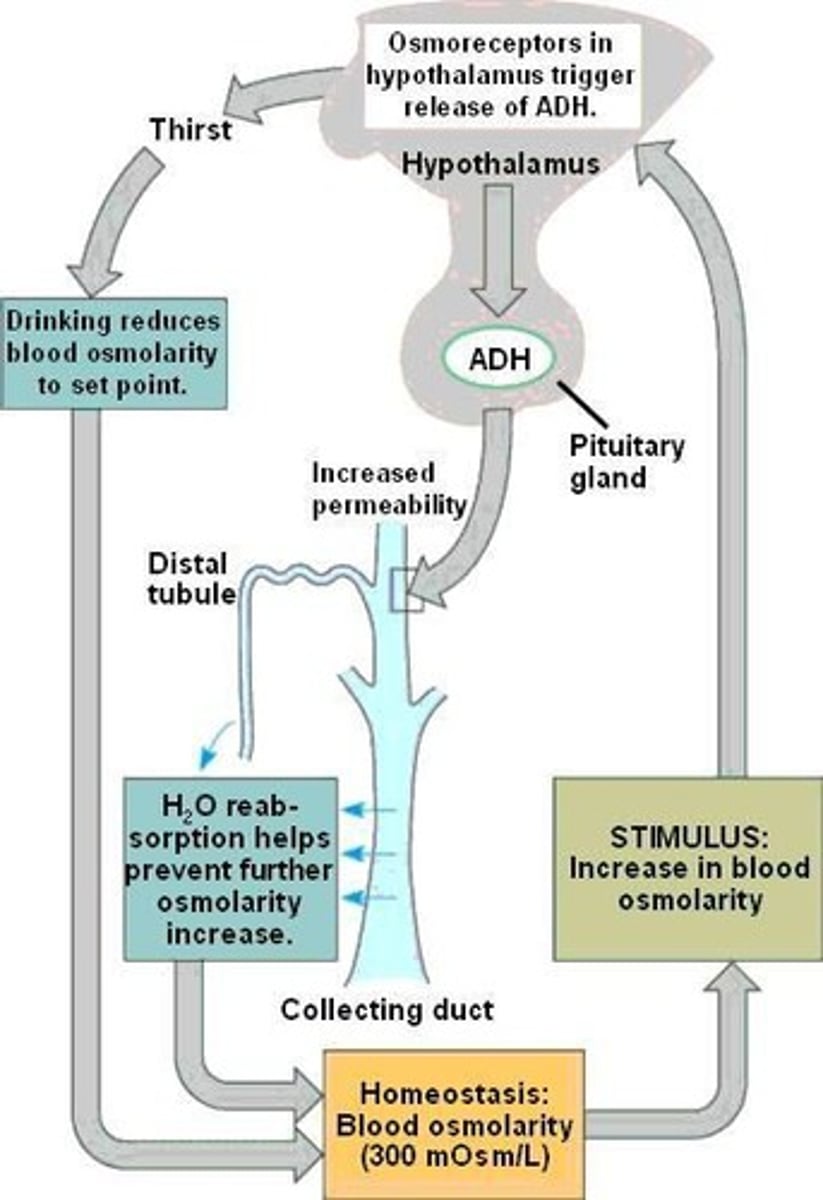Homeostasis and Thermoregulation in Animals
1/264
There's no tags or description
Looks like no tags are added yet.
Name | Mastery | Learn | Test | Matching | Spaced |
|---|
No study sessions yet.
265 Terms
What is homeostasis?
Homeostasis refers to the stability of the internal environment and the mechanisms that maintain it.
How does homeostasis relate to regulation?
Homeostasis is a parallel concept to regulation, sharing similar pros and cons, and is energetically expensive.
What are homeotherms?
Homeotherms are animals that maintain a constant internal body temperature, such as mammals and birds.
What is the thermoneutral zone (TNZ)?
The TNZ is a range of external temperatures in which metabolic rate is minimal and does not change with external temperature.
What happens to metabolic rate outside the thermoneutral zone?
Outside the TNZ, the metabolic rate rises.
What are poikilotherms?
Poikilotherms are animals whose body temperatures are variable and determined by the external temperature.
How do poikilotherms control their body temperature?
They can control body temperatures through behavior, such as positioning themselves in the sun or shade (behavioral thermoregulation).
What mechanisms do homeotherms use to increase metabolic rate in cold environments?
Homeotherms use shivering (skeletal muscles contract to produce heat) and nonshivering thermogenesis (brown adipose tissue produces heat through uncoupled oxidative phosphorylation).

What is the definition of homeostasis in Greek?
Homeostasis comes from the Greek term meaning 'same state'.
What are some key variables maintained within the internal environment of an organism?
Blood glucose levels, water levels, pH, ion concentration, and body temperature.
What are the three components of a homeostatic system?
1. Sensor - detects the variable; 2. Integrator - evaluates sensory information; 3. Effector - restores internal condition.
What role does the hypothalamus play in homeostasis?
The hypothalamus acts as the integrator that evaluates sensory information and determines if a response is necessary.

What is the controlled variable in thermoregulation?
The controlled variable is the characteristic being controlled, such as body temperature.
What are effectors in a control system?
Effectors are tissues or organs that can change the level of the controlled variable, such as shivering muscles.
What is the control mechanism in thermoregulation?
The control mechanism uses information from sensors to determine which effectors to activate, involving nerve cells near the hypothalamus.
How do homeostasis systems typically operate?
Homeostasis systems are based on negative feedback and usually work in antagonistic pairs.
What is an example of a negative feedback mechanism in homeostasis?
Blood glucose levels are maintained at a constant level by a negative feedback mechanism.
What is the difference between homeotherms and poikilotherms?
Homeotherms maintain a constant body temperature, while poikilotherms have variable body temperatures determined by the environment.
What is nonshivering thermogenesis?
Nonshivering thermogenesis is a process where brown adipose tissue produces heat through uncoupled oxidative phosphorylation.
What is the role of sensors in a homeostatic system?
Sensors detect the current level or state of the controlled variable.
What is the purpose of effectors in maintaining homeostasis?
Effectors help restore the internal condition by opposing changes in internal conditions.
What is redundancy in homeostatic systems?
Redundancy refers to the common occurrence of multiple mechanisms to maintain homeostasis, allowing for constant adjustments.
What happens when blood glucose levels are too high?
The pancreas secretes insulin.

What occurs when blood glucose levels are too low?
The pancreas secretes glucagon.
What is a negative-feedback system?
A control mechanism that activates effectors to reduce or negate differences between the controlled variable and the set point, stabilizing homeostasis.
How does positive feedback differ from negative feedback?
Positive feedback amplifies deviations from a controlled variable, destabilizing the system, while negative feedback stabilizes it.
Give an example of positive feedback.
A nerve impulse that lasts for a very brief time and then is terminated.
What is the function of countercurrent heat exchangers in animals?
They minimize heat loss from the body to the environment, allowing animals to thrive in various conditions.
How do countercurrent heat exchangers work in whales?
Bundles of arteries and veins in a whale's tongue form heat exchangers that reduce heat loss to cold ocean water.

What is osmoregulation?
The process of regulating water and solute levels in the body to maintain homeostasis.
What drives osmosis?
The total solute concentration, with water moving from low to high solute concentration.
What is osmolarity?
The concentration of all solutes within a solution, measured in osmoles per liter.
Calculate the osmolarity of a 1 molar NaCl solution.
The osmolarity is 2 OsM because NaCl dissociates into Na+ and Cl- ions.
What role do gills play in osmoregulation for bony fish?
Gills allow for the exchange of water and electrolytes with the environment, crucial for oxygen uptake.
Is osmoregulation a passive or active process?
Osmoregulation is an active process.
How do freshwater fish adapt to their environment in terms of osmoregulation?
They live in environments with few solutes and low osmolarity.
How do marine fish adapt to their environment in terms of osmoregulation?
They live in environments with many solutes and high osmolarity.
What is the significance of maintaining homeostasis in animals?
It ensures stable internal conditions necessary for survival.
What is the relationship between temperature control and homeostasis?
Temperature control is a critical aspect of homeostasis, involving negative feedback systems.
What is the role of the pancreas in blood glucose regulation?
The pancreas secretes insulin and glucagon to maintain blood glucose levels.
What can destabilize a system in biological terms?
Positive feedback mechanisms can destabilize a system.
Why are countercurrent heat exchangers important for animals in cold environments?
They help conserve body heat, allowing animals to maintain their body temperature.
What happens to water movement in relation to solute concentration?
Water moves from areas of low solute concentration to areas of high solute concentration.
What is osmoregulation in freshwater fish characterized by?
Water gain by osmosis and electrolyte loss by diffusion.
What challenges do freshwater fish face regarding osmoregulation?
They tend to gain water by osmosis and lose electrolytes by diffusion.
What are the adaptations of freshwater fish for osmoregulation?
They drink little or no water, excrete large amounts of dilute urine, and actively take up ions through their gills.
What is osmoregulation in marine (saltwater) bony fish characterized by?
Water loss by osmosis and electrolyte gain by diffusion.
What challenges do marine fish face regarding osmoregulation?
They tend to lose water by osmosis and gain electrolytes by diffusion.
What adaptations do marine fish have for osmoregulation?
They drink large amounts of seawater, excrete concentrated urine, and actively excrete ions through their gills.
What is the role of osmoconformers in marine environments?
They match their internal osmotic environment to the same osmolarity as ocean water, but with a different composition of solutes.
How do sharks and rays regulate their osmotic environment?
By accumulating urea while maintaining low levels of ions.
What is the significance of ammonia in nitrogenous waste?
Ammonia is toxic as it raises pH and ammonium ions disrupt cellular respiration.
How do aquatic animals excrete ammonia?
They eliminate most ammonia directly into the water, primarily by diffusion through their gills.
What is urea and how do sharks, adult amphibians, and mammals excrete it?
Urea is produced in the liver, eliminated through urine, and is less toxic than ammonia but requires energy to produce.
What do birds, terrestrial reptiles, and insects excrete as nitrogenous waste?
They convert ammonia into water-insoluble uric acid, which saves water.
What factors influence the pathway of nitrogenous waste excretion in vertebrates?
The pathway depends largely on the availability of water and can change by habitat or throughout development.
What is the function of the renal artery and renal vein in the kidney?
The renal artery brings blood containing nitrogenous wastes into the kidney, while the renal vein carries cleaned blood away.
What is the pathway of urine from the kidney to the outside of the body?
Urine is formed in the kidney, transported via the ureter to the bladder, and released through the urethra.
What are the main structural components of the mammalian kidney?
The kidney has an outer cortex and inner medulla, with most mass made up of nephrons.
What is a nephron?
The nephron is the basic functional unit of the kidney.
Where are most nephrons located in the kidney?
Most nephrons are located in the outer region of the kidney, called the cortex.
What are the main parts of the nephron?
The glomerulus and convoluted tubules are in the cortex; the Loop of Henle and collecting ducts are in the medulla.
What are the three main processes that occur in the nephron?
Filtration, reabsorption, and secretion.
What occurs during the filtration process in the nephron?
Bulk flow of blood plasma out of the capillaries of the glomerulus into Bowman's capsule.
What happens during reabsorption in the nephron?
Solutes are selectively moved out of the filtrate back into the blood, and water is reabsorbed by osmosis.
What is the role of energy in the reabsorption process in the nephron?
Energy is required to move solutes out of the filtrate, while water is reabsorbed without energy.
What are the two plasma membranes that solutes cross in the nephron?
Apical and basolateral membranes.
How is water reabsorbed in the nephron?
By osmosis, requiring no energy.
Where does secretion primarily occur in the nephron?
At the distal convoluted tubule.
What ions are primarily secreted during the secretion process?
Potassium (K+) and Hydrogen (H+).
What is the first process in the elimination of wastes by the nephron?
Filtration.
What occurs during the filtration process in the nephron?
Fluid from blood under pressure is filtered; cells and large molecules remain in the blood, while most water and small solutes enter the nephron.
What is the purpose of reabsorption in the nephron?
To transport useful ions and molecules from the tubular filtrate back into the surrounding body fluids.
What is the final step in the elimination of wastes by the nephron?
Excretion, where wastes and excess water are eliminated as urine.
What structures make up the renal corpuscle?
The glomerulus and the Bowman's capsule.
What is the function of the glomerulus?
To bring blood to the nephron from the renal artery.
What is the path of the filtrate through the nephron?
Bowman's space → Proximal convoluted tubule → Loop of Henle → Distal convoluted tubule → Collecting duct → Renal pelvis → Ureter → Urinary bladder.
What percentage of NaCl and water is reabsorbed in the proximal convoluted tubule?
Approximately two-thirds.
What types of molecules are reabsorbed in the proximal convoluted tubule?
Glucose, amino acids, and other necessary molecules.
What is the role of microvilli in the proximal tubule?
To increase surface area for active transport of selected molecules.
What happens to water during the reabsorption process in the proximal tubule?
Water follows solutes by osmosis along the osmotic gradient.
What characterizes the descending limb of the loop of Henle?
It is highly permeable to water but impermeable to solutes.
What characterizes the ascending limb of the loop of Henle?
It is nearly impermeable to water but highly permeable to Na+ and Cl-.
What occurs in the descending limb of the loop of Henle?
The fluid loses water to the surrounding tissue, reabsorbing water passively.
What happens in the thin ascending limb of the loop of Henle?
Na+ and Cl- ions move passively along electrochemical gradients.
What occurs in the thick ascending limb of the loop of Henle?
Additional Na+ and Cl- are actively transported out of the nephron.
What is the osmolarity of the surrounding interstitial fluid near the cortex?
It is low.
Which characteristics describe the descending arm of the loop of Henle? (Select all correct choices.)
A. It is permeable to water. E. Its filtrate becomes more and more concentrated.
What hormone regulates water retention in the body?
Antidiuretic hormone (ADH)
What stimulates the secretion of ADH?
Increased blood osmolarity and decreased blood volume.
What activates hypothalamic osmoreceptors?
An increase in blood plasma osmolarity.
Where is vasopressin (ADH) secreted from?
The posterior pituitary gland.
What is the effect of increased plasma vasopressin (ADH) levels?
Increased renal water reabsorption and decreased water excretion.
What is the primary function of the ADH system?
To maintain homeostasis by regulating blood and extracellular fluid osmolarity.
What role do aquaporin channels play in the collecting duct?
They facilitate water reabsorption when stimulated by ADH.
What happens to urine concentration when ADH levels are elevated?
Urine becomes concentrated in the collecting duct.
What is the osmolarity of blood that the body maintains?
Around 300 mOsM.
What is the osmolarity of filtrate entering the collecting duct?
Hypoosmotic, with a concentration of about 100 mOsM.
What is the range of urine osmolarity?
Between 100-1200 mOsM.
How does hydration status affect urine concentration?
Well-hydrated individuals produce dilute urine, while dehydrated individuals produce concentrated urine.